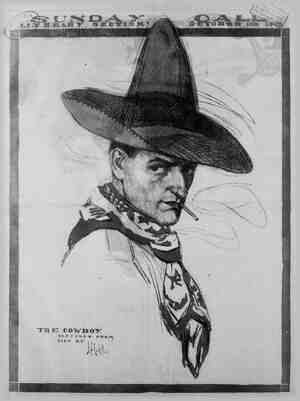Omaha Daily Bee Newspaper, October 11, 1903, Page 25
You have reached the hourly page view limit. Unlock higher limit to our entire archive!
Subscribers enjoy higher page view limit, downloads, and exclusive features.
The Lake Mohonk Indian Conference NIQUE alike in its natural setting, U in its acquired features and in the purpose to which it Is dedicated is Lake Mohonk, the famous sum- mer resort among the Catskills. gn each of these respects it stands quite alone and unrivalled in America if not in the world. Perched on a mountain sum- it amid towering battlements of rock and srowning precipices, beside a tiny lake of the clearest and coldest water, the place 1as not a little resemblance to some of the lofty castles to be seen along the Rhine nd in other parts of the Old World. The \ikeness to a baronial fortress of the old :ime is borne out In some degree by the appearance of the Mohonk hostelry itSelf, which stretches along the one open shore of the lake, under the shadow of the cliffs, in a series of towers, pinnacles and archways, strongly suggestive of the scenes and times ade familiar in romance and chivalry. It 8, indeed, a truly magnificent and lordly fomain over which the owners of Lake Mohonk hold their firm and strong yet »eaceful and gentle sway. From the 300 acres immediately about the lake which tame into Mr. Albert K. Smiley's posses- sion in 1869, the estate has gradually grown Zrom year to year until it comprises a tract »f over 4,000 acres, lying in five different .ownships and embracing the whole region along the crest of the mountain for a space six miles in length by a mile in width. And in this little mountain realm the utmost vare has been taken to preserve every nat- ural charm and its wild, rugged and picturesque scenery has been in nowise marred by the many miles of fine walks and broad, smooth roadways that have wnade every point accessible with comfort, ease and safety. -rom Sky Top, the highest peak in the Mohonk estate, towering 300 feet above the ‘oke, the vision sweeps over as noble and - ginticent a range of scenefy of lofty . cuatains and lovely valleys as may be sce. ‘n_any land under the sun. To the west les the rich and fertile farm lands «.. the Rondout valley and beyond them se the Catskills, rich in romantic and historie memories. Directly below the pua of Mohonk lie the meadows and v enards of the Wallkill valley, with the « @ Dutch settlement of New Paltz nest- ling among its trees and gardens, and 1.iles beyond these, still eastward, the 1iighlands of the Hudson, And in those rare days, when the sky is seft and clear, the pilgrim in this favored land looking out from the heights of Sky Top may catch glimpses of the Berkshire -hills of western Massachusetts, of Vermont's verdant mountains and sometimes may extend his vision even to the ranges of the Alleghen- jies beyond the Pennsylvania border. Two conferences have been held at Lake Mohonk each year for some ycars past which are quite as unique and notable in thelr way as the place itself. Both owe their inception to Mr, Albert K. Smiley and are a natural outgrowth of the spirit and purpose which dominate the life and control the conduct of this peace-loving, large-hearted and broad-minded Quaker philanthropist and educator. One of these conferences held each year in May Is de~ voted to the cause of international arbitra- tion, bringing hither at each session for the discussion of that vital and important subject some 200 or 300 of the most eminent educators, publicists, diplomats and states- men of the Old World and the New. Prao- tically a whole week is given up to the sessions of this arbitration conference, all of the members of which are here by spe- cial invitation of Mr. Smiley and are en- tertained as his personal guests. Another conference held under similar auspices and conditions closes the Mohonk season In October, this in the interest of the Indians. The Indian conference is much the older of the two, the first session having been held in October, 188). This Indian conference grew out of Mr. Smiley's personal interest in the welfare of the aborigines, to the promotion of which he has long been identified in other ways. He bhas been a member of the Board of Indian Commissioners sintce 1879, under appoint= ment from President Hayes; he has been intrusted by the government with several important commissions connected with the Indian service. In 1889 he was chairman of a commission charged with the selection of a4 reservation for the Mission Indians of southern California. His experience and observaticn in connection with these dut'es convinced Mr, Smiley of the need of more coherency, system and union in the work for the Indlans, and for this purpose he has called together year by year for twenty successive years these assemblies of men and women, carefully chosen because of their special knowledge and intelligent in- terest in the Indian affairs, These confer- ences Mr. Bmiley declared at the first ses- sion will be held “until every Indian has his rights.” The late General Clinton B. Fisk pres!ded over the first conference, which brought together between fifty and sixty perazons prominent in the Indian service, General Fisk continued as the presiding officer of these gatherings until his death in 1890, since which time the chair has been ocecu- pled, until 1802, by Dr. Merrill Hdwards CGates, formerly pgesident of Amherst col- lege and latterly the efficient secretary of the Board of Indian Commissioners. At (Continued on Page Eleven.) ALBERT W. SMILEY,

